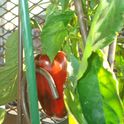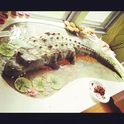Pizza crust was tough.
I switched out a portion--about 1/2---of the AP flour called for in the recipe and used white whole wheat as well as TJ's all-purpose(higher protein level). I used only a fraction of regular unbleached AP which is what was originally called for. The recipe calls for first making a yeast sponge with tepid water, olive oil, and flour, then adding more flour & salt. I could tell it was tough & dry when it came together under the dough hook in the KitchenAid. My experience with yeast dough is pretty much ltd. to the much softer challah dough, always kneaded by hand; have only made pizza once before. Was the white-whole wheat substitution the cause of the dry texture?
14 Comments
http://www.food52.com/recipes...
And years ago, New York Magazine give a 1st prize to a crust made with part rye flour...
I doubt the protein content of the white WW was a big factor--it's only slightly higher than most AP flours.




